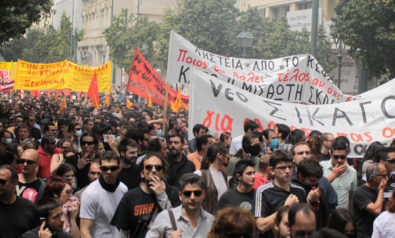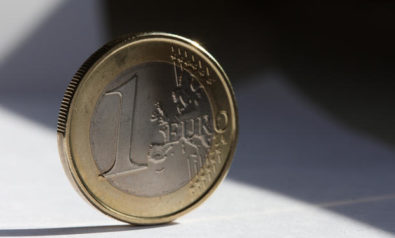As Europe continues to seek a solution to its ongoing financial crisis, it could benefit from understanding Asia’s definitive 1997/98 economic crisis, in particular the successful initiatives by Malaysia to counter the crisis.
The debate and proposals currently under discussion in Europe regarding austerity, Euro bonds, easing of interest rates and other choices of economic direction to resolve the problem are akin to debates in Malaysia during the Asian Financial Crisis. Further, similar to Europe today, the Asian Financial Crisis saw the advent of proponents for tough austerity measures as some wished to punish countries for errors in economic management.
Malaysia: A Buildup to Crisis
In the prelude to the Asian Crisis the Malaysian economy enjoyed a period of high growth, huge capital inflows, runaway stock market, credit expansion and a property boom. However, the economy faced a large current account deficit exacerbated by fixed exchange regime and exponential credit growth for banks and corporations that had over extended themselves due to lax lending standards and even, at times, fraudulent lending. In 1997, devaluation of the Thai Baht sparked a crisis and soon the contagion effect was felt in Malaysia. Initially, many errors were committed in response to the crisis: Malaysia defended the Ringgit, resulting in increased interest rates; inevitable capital flight dried up liquidity; and credit tightening forced severe economic contraction.
Like the current European outlook, there was anticipation in Asia for long-term decline and bleak prospects of economic growth. In fact in 1998 senior most government officials were concerned about Malaysia being afflicted by a Latin American styled economic crisis which would marginalize youths from employment and participation in society. Thus, unlike Korea and Thailand, which had implemented IMF advised measures, the Malaysian government opted not to implement harsh austerity measures which it felt would unduly hurt the general population.
The Malaysian Response to 1997/98 Crisis
First, at the time of the crisis, Malaysia ensured that political stability was maintained. Despite the highly publicized sacking and arrest of the then Deputy Prime Minister and its ensuing demonstrations, the political situation in Malaysia remained stable (contrary to the images shown by the international press that sensationalized protests). With political stability intact, the single most important ingredient to recovery and economic growth was firmly in place. Further, the Government ensured the continuation of safety nets to support the weakest members of society, such as subsidies and welfare payments. Despite early rhetoric to the contrary, the Government pursued sensible fiscal prudence, for example, delaying the huge hydro-electric dam in Bakun and shelving several high-profile commercial development projects.
In line with maintaining political stability, the Government had to stabilize critical components of the economy by addressing the wildly fluctuating exchange rate and the untenable interest costs. In 1998, the Government pegged the Ringgit and introduced capital controls to stem the flight of capital which had completely disrupted the economy. Though in the short term inflation was high due to high import costs, eventually prices stabilized and the low interest rate regime did not affect the price of goods as demand had collapsed. Gradually, demand for goods and services increased in a more favorable interest rate climate.
Internal demand, which had in large part ushered in the crisis by fueling a property bubble and Government spending, was replaced by strong export growth. A depreciated currency also ensured imports were curtailed. Commodity prices denominated in United States Dollars resulted in booms for Malaysian companies operating at Ringgit costs. Further, with political stability, the tourism industry also contributed to exchange earnings. An unexpected spin-off resulting from import substitution was the growth in private higher education institutions to provide education for those who could no longer afford to go to the UK,US, Australia and Canada to pursue higher learning. It would be hard to imagine in Malaysia that repositioning of industries by wage adjustment and efficiency gains such as the suggested solution in the Eurozone today, could have built up demand for products and services so rapidly. This is because labour is simply not as mobile as capital to create substantial economic adjustment in the short term.
The health of the banking system and credit for productive purposes which had been severely affected by the crisis was addressed by comprehensive measures. Three institutions were set up within 12 months to implement these measures (Danaharta, Danamodaland CDRC) and emergency legislation was passed to allow these institutions to work effectively. The objective of these institutions was to ensure recapitalization of banks and the removal of Non-Performing Loans, effectively enabling banks to get back to the business of lending. Further, financial restructuring of companies facilitated viable companies to return to the economic fold and contribute to demand and economic growth, whilst foreclosed assets bought by investors and put back to economic use also drove growth. Effective techniques were employed to clear and hold properties where there was clear justification, that is to say where they could be either developed or used to achieve commensurate rental yield. Not only did these measures encourage return of activity to the property sector; they also stemmed the outright collapse of property prices.
These measures – property sales (by Danahartavia), extensive promotion, and setting benchmark prices – resuscitated the collapsed property market. Although there are pockets of properties that remain abandoned till today, the numbers are insignificant.
Malaysia recovered unscathed by the Asian crisis and according to some estimates; the cost of the initiatives taken by the Government to recapitalize banks and write off bad loans was no more than 4% of GDP. Today, the economy grows steadily, albeit no longer at the near double digit growth observed during the pre-crisis period. (This is not to ignore Malaysia’s challenges today; there is concern about rising domestic debt and Government budget deficit, as well as fear of being caught in the middle income trap, but these are beyond the scope of this article.)
What Europe Can Learn
Though in some respects it is difficult to compare Europe and Malaysia, there are fundamental lessons to be learned. Like Europe, Malaysia had legacy economic issues at the time of the crisis: a current account deficit, an over extended property sector, crony capitalism, protected industries, etc. However, Malaysia opted for measures to restore demand before addressing legacy problems. This ensured clarity of direction and purpose of initiatives undertaken to restore the economy. Improved corporate governance and long-run fiscal discipline are important in the long run, but as the Asian crisis shows they do not restore demand in the short-term.
It takes bold and visionary leadership to make courageous decisions during crisis that take a country back on the road to recovery. Europe must recognize that the demand collapse is the most pressing issue and should set priorities accordingly.
The views expressed in this article are the author’s own and do not necessarily reflect Fair Observer’s editorial policy.
Support Fair Observer
We rely on your support for our independence, diversity and quality.
For more than 10 years, Fair Observer has been free, fair and independent. No billionaire owns us, no advertisers control us. We are a reader-supported nonprofit. Unlike many other publications, we keep our content free for readers regardless of where they live or whether they can afford to pay. We have no paywalls and no ads.
In the post-truth era of fake news, echo chambers and filter bubbles, we publish a plurality of perspectives from around the world. Anyone can publish with us, but everyone goes through a rigorous editorial process. So, you get fact-checked, well-reasoned content instead of noise.
We publish 2,500+ voices from 90+ countries. We also conduct education and training programs
on subjects ranging from digital media and journalism to writing and critical thinking. This
doesn’t come cheap. Servers, editors, trainers and web developers cost
money.
Please consider supporting us on a regular basis as a recurring donor or a
sustaining member.
Will you support FO’s journalism?
We rely on your support for our independence, diversity and quality.








Comment